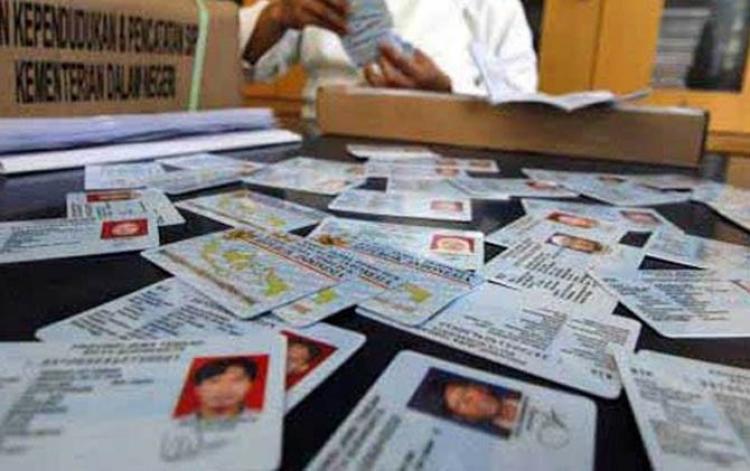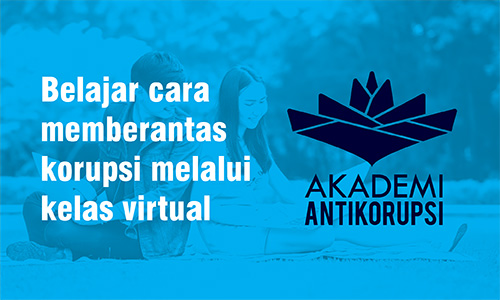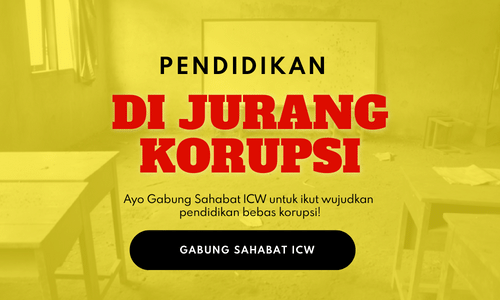Political Parties in the Tempest of e-KTP Corruption

Several days before the reading of the indictment, the Chairman of the Corruption Eradication Commission has hinted that ‘big names’ would be mentioned in the tempest of e-KTP corruption. This hint was proven during the trial session, during which the public prosecutor did not only mention names of dozens of members of Parliament who were allegedly involved, but also the amount: hundreds of billions of rupiahs that flowed into a number of political parties.
The indictment was written in a 121-page document that confirmed about the corruption of e-KTP, whose rumors have been in circulation for some time. The scope of corruption did not only involve procurement of goods and services in the government, but also beginning during the budgeting process. The indictment explicitly mentions all persons benefited by the corruption: those from the ranks of the Ministry of Home Affairs, corporations, and 59 Members of Parliament, of which 37 were members of Commission II.
When considered more closely, the prosecutor tried to prove two constructions. The first is corruption in the procurement of goods and services in the Ministry of Home Affairs. The second is the alleged corruption in the budgeting process in the House of Representatives. In this section, the prosecutor tries to prove the involvement of members of the legislature to ‘safeguard’ in the budgeting process (i.e. trying to benefit themselves from the budgeting).
Under continuous supervision
The procurement of goods and services in the e-KTP project has actually been monitored by many parties. Early on, many institutions have paid attention to this project. Among these are the Corruption Eradication Commission (KPK/hereinafter ‘Commission’), LKPP (Policy Institute for Procurement of Goods/Services), and the ICW. The problem is that the feedback, suggestions and recommendations resulting from the monitoring were not followed up seriously by the government as the provider of the procurement of goods and services.
The Commission has submitted a seven-point recommendation to the e-KTP project. One of them was the improvement of the grand design of e-KTP. Hopefully, the implementation of this major project is carried out after the population database has been cleaned, meaning that there is no duplication in the national population registry.
Related to the implementation of the bidding, LKPP has submitted its findings on the indication of violation of the procurement of goods and services. Referring to LKPP Letter No. B-3376/LKPP/DIV.2/07/2011, the procurement committee allegedly conducted post-bidding in the procurement process of the e-KTP. This meant that they are suspected of modifying, adding, replacing and/or deleting the procurement document and/or offer documents after the deadline for submission of bids. The action is a serious violation of the rules of procurement of goods and services.
Many reports of violations in the bidding process result in the project being disputed in the KPPU (Business Competition Supervisory Commission). It was decided that the government and the winning consortium were proven of auction rigging. For this action, the PNRI consortium (the winner of the bidding) is subject to a penalty of Rp 20 billion, and PT Astra Graphia penalized with Rp 4 billion. However, the consortium was acquitted on 29 October 2014 when the KPPU lost the appeal process.
In addition to the problems in the bidding, the ICW monitoring results show that the e-KTP card project has been misguided since the planning process. The government forced Indonesian citizens to make ID cards en masse. Under the contract, the government targeted the creation of e-KTP for 67 million inhabitants by 2011 and 105 million by 2012. That this project would be chaotic and unfinished was actually predicted since the beginning. The government was too ambitious and irrational. The e-KTP project would not actually be processed by the court had the government listened to input and implemented recommendations from other institutions. Unfortunately, the government did not heed the input and stuck to its plan.
Indications of Budget Misappropriations
One of the reasons that this case is categorized as a massive corruption is the value of the project, and also of the loss, reaching trillions of rupiahs. Even more terrifying, the indictment argues that up to 49% (Rp 2.55 trillion) of the value of the project was lost to corruption. This is no less than crazy when almost half the value of the project was lost to corruption. Another reason is that this case involves a number of high ranking state officials.
The Corruption Eradication Commission’s report regarding the refund of Rp 30 billion from 14 individuals confirmed that money was distributed in the e-KTP project. From the perspective of Anti-Corruption Law, the refund is certainly not going to remove the criminal element. The parties returning the funds to the State would still have to undergo a legal process, although the prosecution and conviction would be more lenient than the parties that do not return the funds.
The most interesting element of this case is that hundreds of billions of rupiahs ended up in political parties. If true, the Commission has a responsibility as well to pursue the political parties. The important question is whether the Commission could hold a political party responsible, if it is involved in corruption. It may be possible if the Commission uses Law No. 8 of 2010 on Money Laundering (AML Law) in the indictment.
According to the Money Laundering Law, a corporation is a group of persons and/or properties, either as a legal entity or not as a legal entity. Based on the explanation, a political party of course meets the criteria as a corporation.
Corporations convicted of the crime of money laundering with corruption as the original crime can be given criminal sanctions and fines. In addition, the corporation could be sentenced to an additional form of revocation of business licenses, confiscation of assets, and dissolution.
The use of the AML Law is highly strategic and relevant to make a ‘clean sweep’ against individuals and corporations involved in corruption. If the prosecution manages to prove all arguments in the indictment, at least the law enforcement can seize the proceeds of crime held by individuals and corporations.
The reaction of Senayan politicians
The mention of the names of members of Parliament who were accused of having been involved in the e-KTP corruption received a very harsh reaction. Those incriminated not only denied, but also took legal action against the witness and defendants to the Criminal Investigation Police.
On March 9, 2017, the Chairman of the House of Representatives of the 2009-2014 period, Marzuki Ali, reported Andi Narogong et al for ‘filing a false notification to the authorities’ and ‘defamation’ (according to EIT Law). Not stopping there, Marzuki Ali also called on other members of Parliament referred to in the indictment to report as well.
While retorts and legal course are allowable as the rights of a citizen, for the sake of combating corruption, there are several important things to consider. First, in relation to a witness, someone would need to have physical and psychological protection, as well as legal protection, as stipulated in the law, particularly the Law of Witness and Victim Protection. Moreover, the defendants were in an effort to put themselves forward as justice collaborators.
The physical and psychological protection in question includes protection from threats of terror, intimidation and other threats related to the testimony that will be delivered. It must be kept in mind that the witnesses communicate their testimonies in place, in the presence of investigators and the judges. As for legal protection, it is a condition in which witnesses could not be prosecuted, either criminal or civil, on the testimony that has been given.
Second, in terms of witnesses receiving a lawsuit over their testimony, according to Article 10 of the Law of Witness and Victim Protection, the lawsuit shall be terminated. Therefore, at the behest of law and the interests of combating corruption, the police should postpone or even reject the report of Marzuki Ali until the decision is legally enforceable.
In addition to doing a rebuttal, the reaction coming from politicians in Senayan is the discourse of the right of inquiry in the e-KTP corruption case. At any rate the people are traumatized by the model of resolving corruption cases through rights of inquiry in the Parliament. No cases of corruption can be resolved through that path. It is only a waste of time and budget. This is evident from the proposed right of inquiry in the case of Century Bank, and the proposed right of inquiry in the case of Bank Indonesia Liquidity Assistance (BLBI).
The biggest challenge for the KPK is not only to punish those enjoying the fruits of corruption in the e-KTP case, but also to restore the state losses amounting to Rp 2.3 trillion, as well as stopping harm that impacts the wider community. Therefore, in the handling of e-KTP scandal, noise is something that cannot be avoided. The higher the rank and influence of officials ensnared in the corruption case, the louder the noise that appears.
The Commission does not have to worry about the noise. It does not concern the Commission; and it should just focus on efforts deliver proof in court. If there is a threat to the Commission over its handling of this case, the people will certainly defend it.
* Tama S. Langkun, Coordinator of the Legal and Judicial Monitoring Division of Indonesia Corruption Watch (ICW)
* A printed version of this article in Indonesian has been published in the weekly Gatra, 22 March 2017 edition, pp. 34-35, titled “Partai Politik dalam Pusaran Korupsi E-KTP”.










